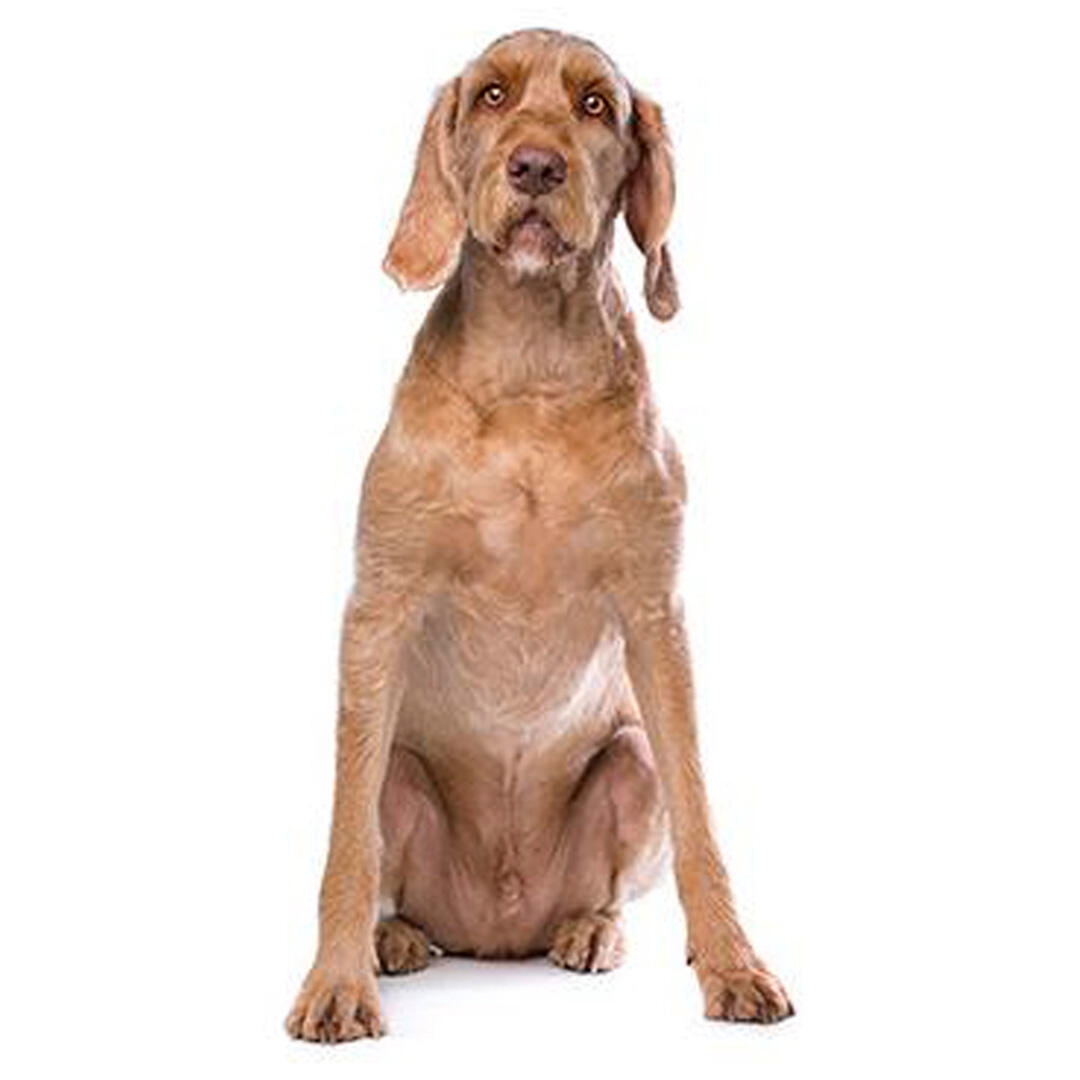
| Family-friendly: | 5/5 |
| Exercise needs: | 5/5 |
| Easy to train: | 5/5 |
| Tolerates being alone: | 1/5 |
| Likes other pets: | 5/5 |
| Energy level: | 5/5 |
| Grooming needs: | 3/5 |
| Shedding: | 2/5 |
The Hungarian Vizsla breed can be prone to:
- Hip dysplasia
-Hyperuricosuria which is where uric acid build up forming stones in the bladder and sometimes the kidneys. This can be a very painful condition.
Priority Kennel Club health schemes and testing:
- Hip dysplasia screening scheme
A larger-than-life character, the Hungarian Vizsla makes a fun, lively, loving companion for those who can give him the time and attention he needs. A sensitive dog, they enjoy being active and learning new things and revel in training, provided it is fun and rewarding. They can be naturally protective of their family and as they bond so closely to their beloved owner, they hate to be left alone.
| Family-friendly: | 5/5 |
| Exercise needs: | 5/5 |
| Easy to train: | 5/5 |
| Tolerates being alone: | 1/5 |
| Likes other pets: | 5/5 |
| Energy level: | 5/5 |
| Grooming needs: | 3/5 |
| Shedding: | 2/5 |
There is no doubt this is an old breed - but just how old has been the subject of many arguments. They are in size and shape very similar to the Weimaraner but with different colouring - and some say that the Vizsla was a cross between the Weimaraner and various pointers as recently as the 20th century. Hungarian breeders however maintain that it is the other way round and that there are records of Vizslas dating from the 11th and 12th century when they would hunt with Magyars and their falcons. In all likelihood this is the correct version of events and the Vizsla has been helping Hungarian hunters for hundreds of years - although when the breed struggled to survive in the early part of the 20th century, pointers were introduced to strengthen the stock and ensure their survival.
Wirehaired Vizsla owners should be prepared for long walks and much time spent outdoors, lots of training and gundog related activities. This is a rural dog, for rural people and though they are robust and have fantastic stamina, they are also sensitive and won’t thrive in an overwhelming urban environment. Adaptable and clever, they’re capable of any task you are capable of training!
The Hungarian Vizsla needs at least two hours of active daily exercise a day. As you'd expect, given their hunt, point and retrieve background, retrieve games (on land and in water) are popular with them, and they do need plenty of off-lead free running and exploring.
Like most gundogs, Hungarian Vizslas do not do well in urban environments. They are large, active, country dogs that need space both inside and out.
The Hungarian Vizsla needs to have a balanced dog diet including all the main nutrient groups and a constant supply of fresh water. Learn how to feed your adult dog with our guide. It's also important to conduct regular body condition scores to ensure you keep your dog in ideal shape and remember to feed them at least twice daily and in accordance with the feeding guidelines of their particular food.
The wiry coat is easy to care for and required very little maintenance – just a weekly brush along with checking for any lumps, bumps and injuries picked up from charging their undergrowth. Check out our easy dog grooming tips.
Vizslas enjoy working with their owners and will enjoy training as long as it is fun and rewarding. They can reach a high standard of obedience and can happily compete in dog sports such as agility - but will sometimes have unexpected moments of apparent deafness when something exciting like a squirrel catches their eye! As such, training a good recall is important.
Hungarian Vizslas can make great dogs for active families with older children who love the great outdoors and plenty of walking.
While many dogs are traditionally thought of as being good with children, all dogs and children need to be taught to get on with and respect each other, and be safe together. Even so, dogs and young children should never be left alone together and adults should supervise all interactions between them.
Known as dogs who originally hunted alongside falcons, it is said that they still have a natural affinity for birds of prey.